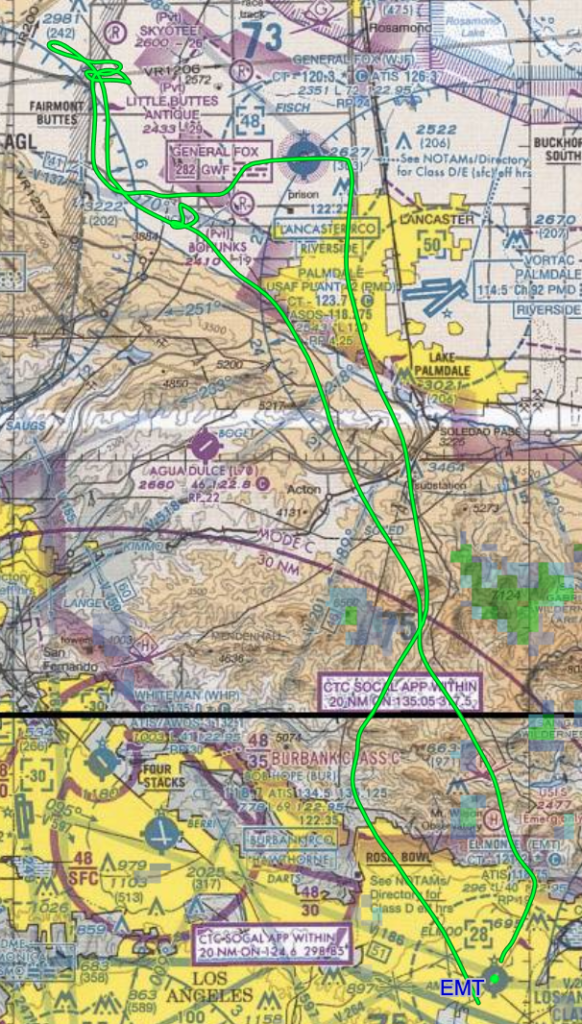Help improve flight safety
May 27th, 2019 at 7:17 pm (Flying)
The FAA publishes NOTAMs (NOTices to AirMen… and women…) to alert pilots to conditions like closed runways or unlighted cranes that haven’t yet been added to navigational charts. It’s a standard part of pre-flight planning to check the NOTAMs for your origin and destination airports. For example, this paid off for me last summer when I learned that the Palm Springs airport had recently changed their ATIS (weather) radio frequency. I didn’t have to flail around in the air wondering why I couldn’t pick up the transmission, which would be stressful right when you’re approaching your destination and preparing to land.
However, it can be challenging to sift through 50+ NOTAMs to find the ones that matter for your flight. Some only matter if you’re flying IFR (under Instrument Flight Rules), which isn’t something I do (yet). In addition, they are written in a cryptic format that can be an obstacle to figuring out whether or not a given NOTAM is relevant. I recommend this great discussion about the challenges and frustrations of using NOTAMs. There have been numerous requests to improve this system, but to date we are still using the format developed in 1924.
So I was thrilled to learn of an effort to get pilot feedback on real NOTAMs to assess whether they are (1) comprehensible and (2) critical to include in a pre-flight briefing. You can participate too!
The very first NOTAM I got to review was:
!TJSJ 11/155 ABO OBST TOWER LGT (ASR 1203643) 182618.90N0663624.20W (4.0NM E ABO) 569.2FT (240.2FT AGL) OUT OF SERVICE 1711121110-1711271109
In human language, this a warning that the light on a tower near the Antonio/Nery/Juarbe Pol Airport in Puerto Rico (I had to look it up) will not be lit between Nov. 12, 2017 at 1110Z (i.e., time in UTC) and Nov. 27, 2017 at 1109Z. Now, a tower without a light can be a problem because people have flown into such towers, with lethal results, which is why we put lights on them. However, this tower is 240′ above the ground, 4 nautical miles away from the airport. No airplane in its right mind would be anywhere near that tower unless it were doing an emergency landing. Arguably, you would want to know about it if you were doing an emergency landing, but it’s not feasible to know about (and recall) every 200′-high tower along your entire route of flight just in case you suddenly try to land on one. So I would judge this NOTAM to be not useful and yet another of the extras that clutter up the list.
One weakness of the survey is that it doesn’t give you any context for the flight, and context matters. In the default FlightService briefing, you get NOTAMs not just for your origin and destination airports, but also for every airport within 25 nm of your flight path (this generates a nightmarish amount of spam when flying in the L.A. Basin). In this case, is ABO my destination or just something within 25 nm? Also, if it were a night flight, or if I were in a helicopter, I might care more about this NOTAM.Â
The second one I got was more useful:
!TBN 12/017 TBN SVC ATIS NOT AVBL 1812282123-1812312200
This warns that the ATIS (weather service) will not be available from Dec. 28, 2018 at 2123Z to Dec. 31, 2018 at 2200Z. Again, context matters; if this is the destination airport and my flight plan has me heading there between those dates/times, then I will want to look for other nearby sources of weather information and have those frequencies ready to go, or plan to query the tower directly (KTBN is an airport in Missouri, it turns out, that has a tower).Â
I hope that the people behind the NOTAM survey are able to collect useful data and use it to help improve future notifications to pilots!


